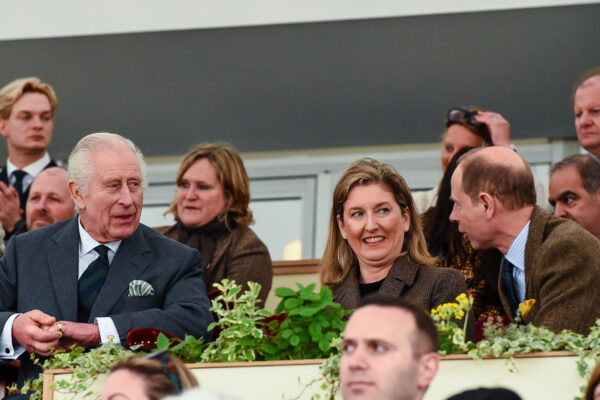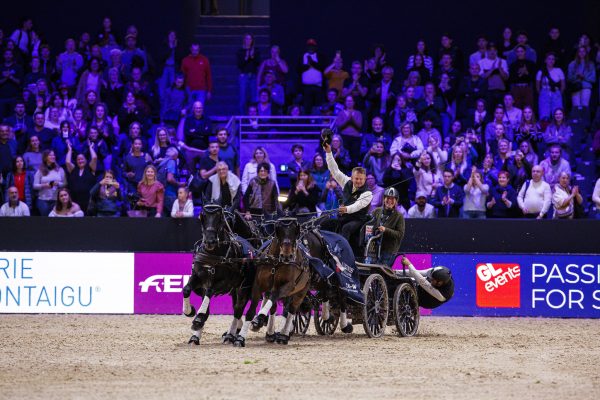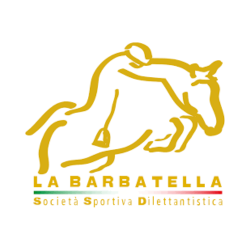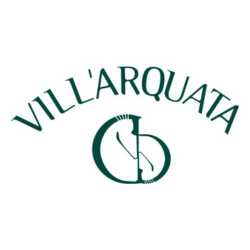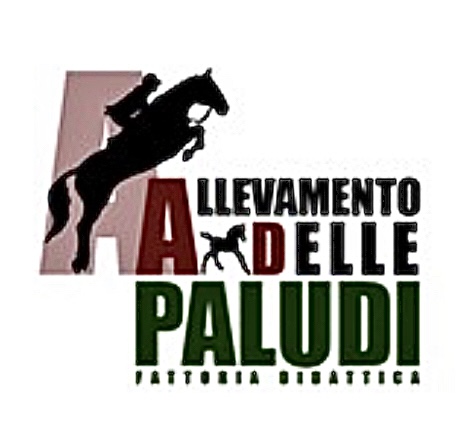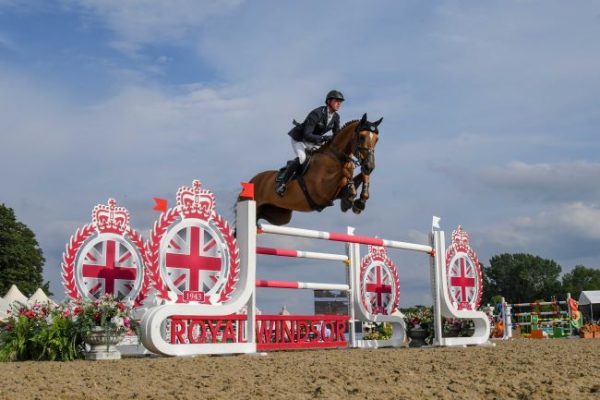
Driving: long reins with a royal flavour
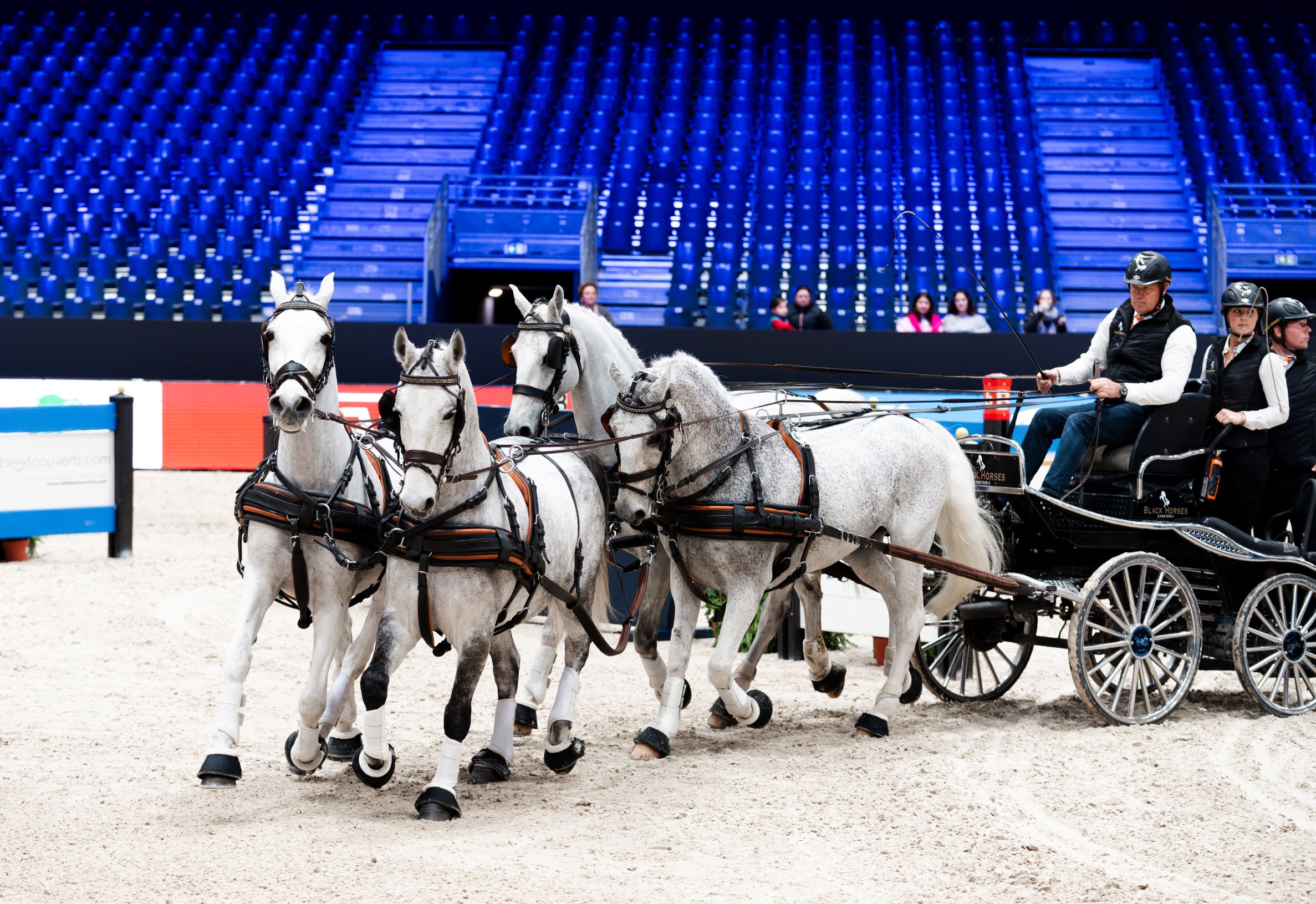
There is an equestrian discipline with an innate old-world charm. It is called driving, the only one among the equestrian specialities in which one does not ride a horse, but drives it from a carriage. The ancient origins are easy to trace, for centuries horses pulled carriages then, as has happened in every equestrian field, carriages too abandoned their function as a means of transport, except for some sumptuous weddings, and turned into an exciting sport.
Philip of Edinburgh and his love of long reins
Driving, as a sporting discipline, owe much to Prince Philip of Edinburgh who, along with his Queen, has always loved horses. From a polo champion, a sport he practised from an early age until 1971, the Prince Consort turned into a great fan and practitioner of the discipline of driving, so much so that it was thanks to him, President of the FEI (International Equestrian Federation) from 1964 to 1986, that the speciality became part of the Federation’s disciplines, making its debut in a World Championship in 1972 in Munster, Germany.
To return to the late Prince of Edinburgh, he approached the discipline when he was no longer a young boy but, between his innate love and profound equestrian knowledge and all the horses, grounds, masters and carriages available in the royal stables, he managed to have his say and lead his beloved England to European and world glories, including the European Championships at home (in the true sense of the word), those of Windsor where, he loved to remember, with his usual British humour, he had not even done so badly, he had come almost last.
In 2021, shortly before his 100th birthday, the Prince passed away. Still, he bequeathed to his granddaughter Louise not only horses and equipment but also the task of carrying on the passion for this noble equestrian art with its various trials and skills.
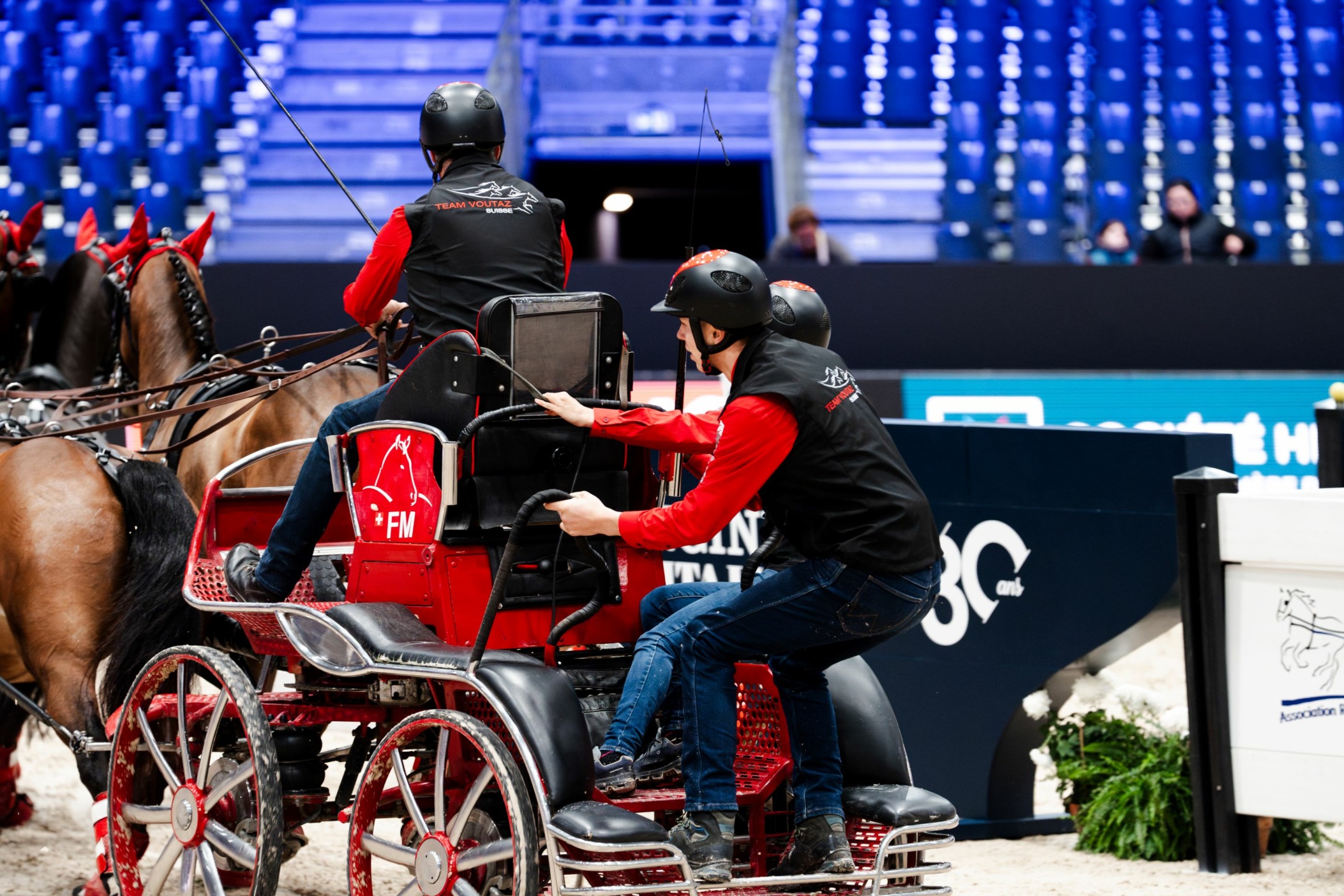
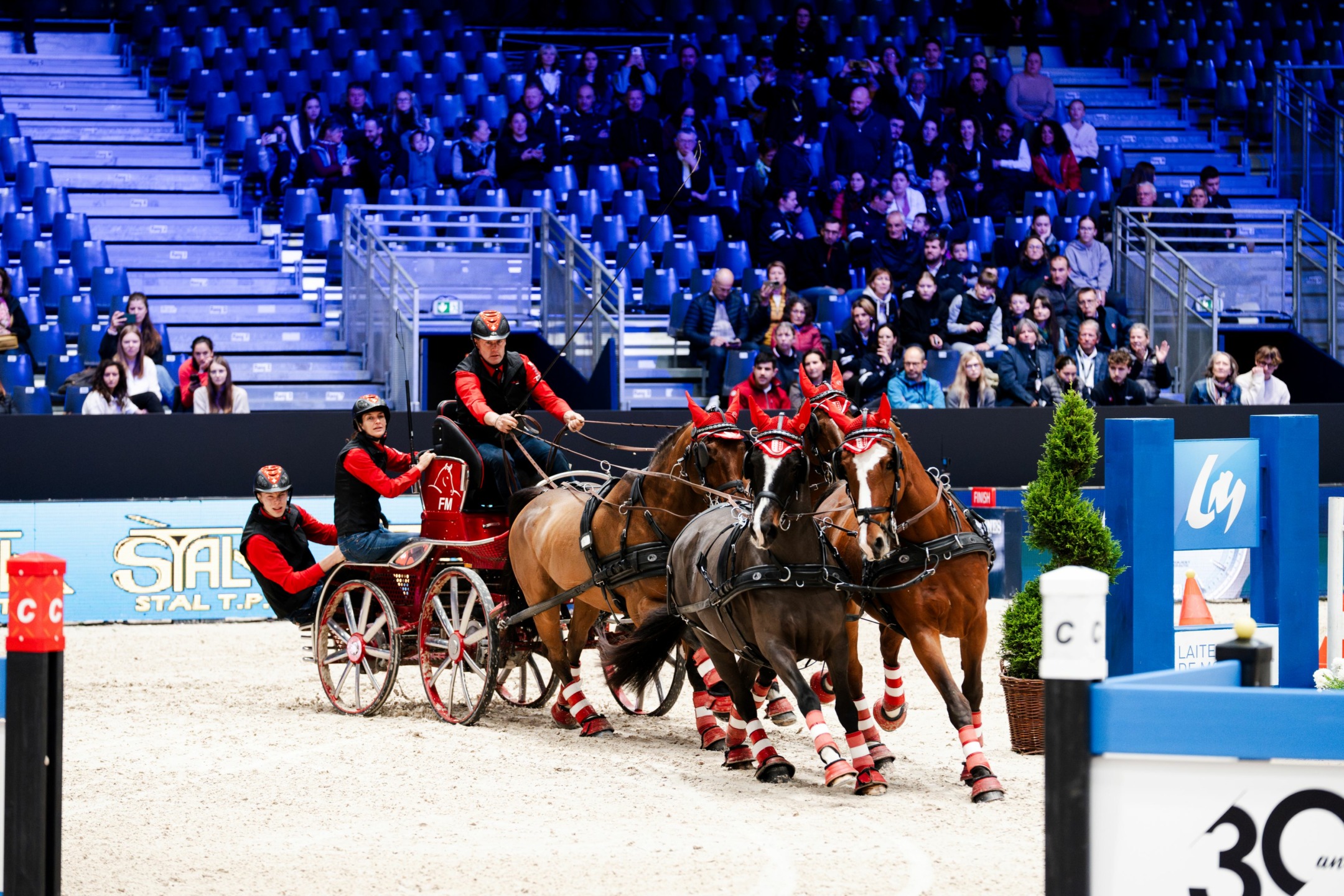
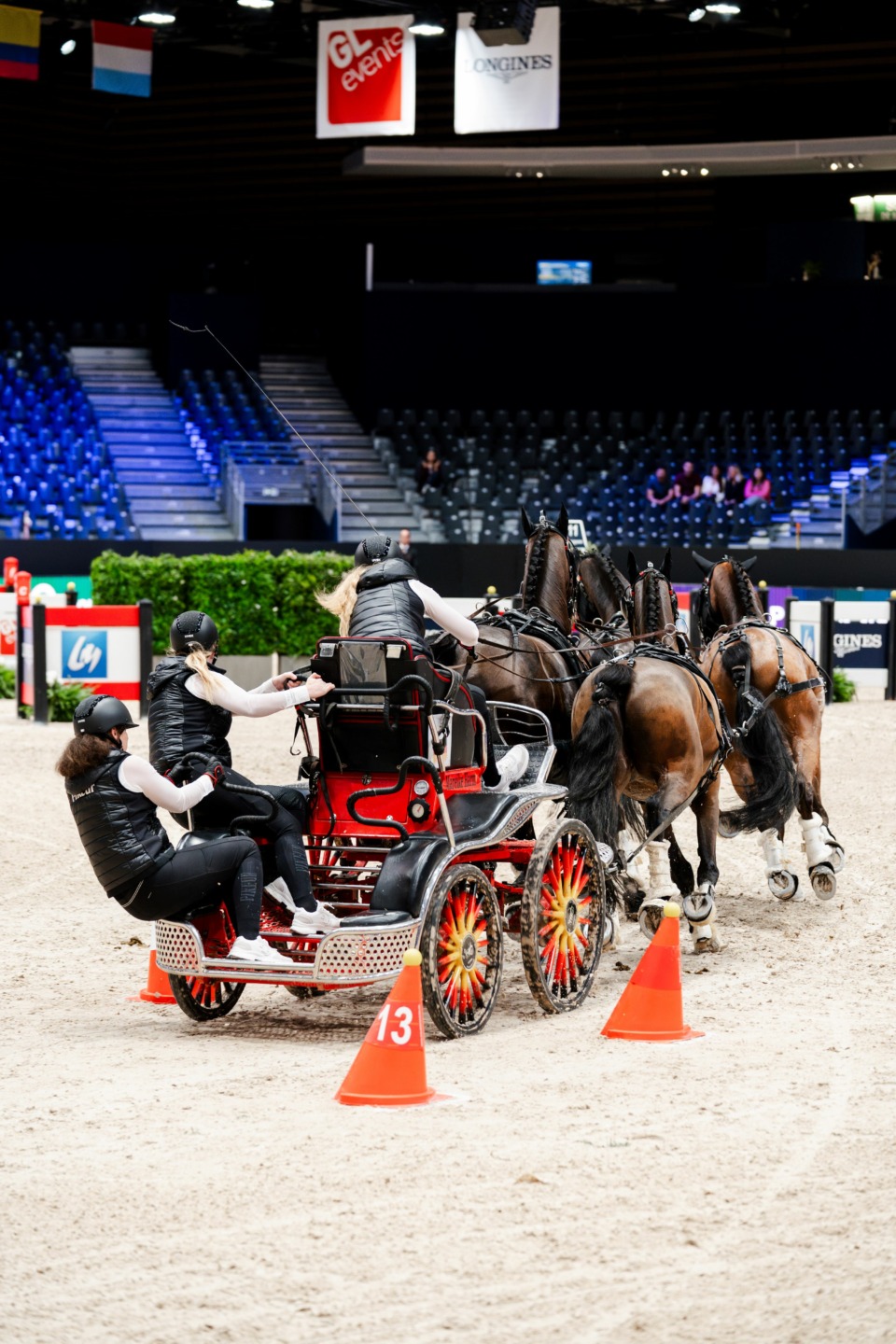
One, two or four
The driving discipline consists of a set of trials in which the horse is attached to the carriage.
Depending on how many horses are attached, there are different categories: the ‘Single’, with only one horse, the ‘Parley’, consisting of two horses, and the ‘Tug-of-Four’, which, as the name implies, has four horses pulling the carriage. As far as competitions are concerned, there are two types: the complete and the combined.
The former consists of three events, dressage, cones and marathon, while the latter includes cones and marathon. In each case, the final ranking is derived from the sum of the negative points acquired in the various tests.
The three tests
The driving tests can in a certain sense be compared to the full dressage, there is the dressage test, in an 80×40 metre rectangle, the show jumping test is replaced by the cones, between which the skilful drivers have to slalom and serpentine, and the marathon, the most spectacular of all.
In this test, the driver, at full throttle, steers the carriage between mobile and fixed obstacles and tackles obligatory passages between woods and logs and passages through water. In short, an intense spectacle, not to be missed!
An interesting aspect
This fascinating discipline, which now accounts for around 33% of the total membership in the FEI, is also on the upswing thanks to a unique and interesting factor. In driving, one does not ride on top of the horse, but one rides on a horse.
A true partnership, if not even a team, is created when it comes to Tug-of-Four or Parley. The driver and his horses move in a spectacular whole, yet it may be the right discipline for those who are attracted to horses but do not feel like riding one. The same goes for those who, perhaps after a bad fall, cannot get back in the saddle but, equally, have no intention of leaving this wonderful world.
Last, but not least, is the example of our Prince Philip, now physically out of age for polo, but mentally ready, snappy and passionate, he was able to reinvent himself on long reins.
Elena Pecora
ph Marie Schmidt
© Rights Reserved.




.png)



